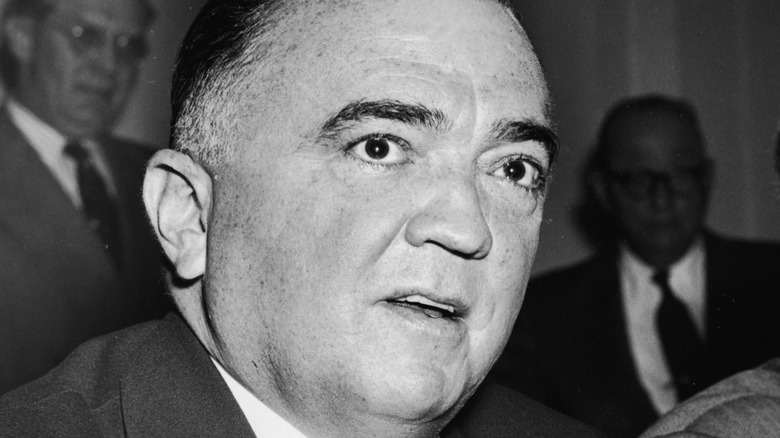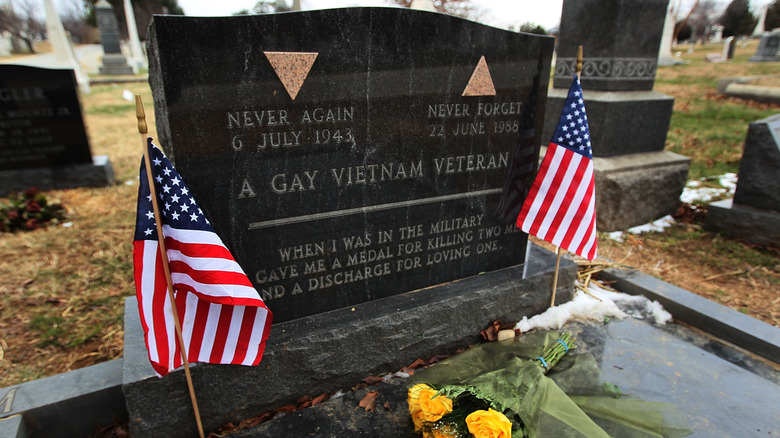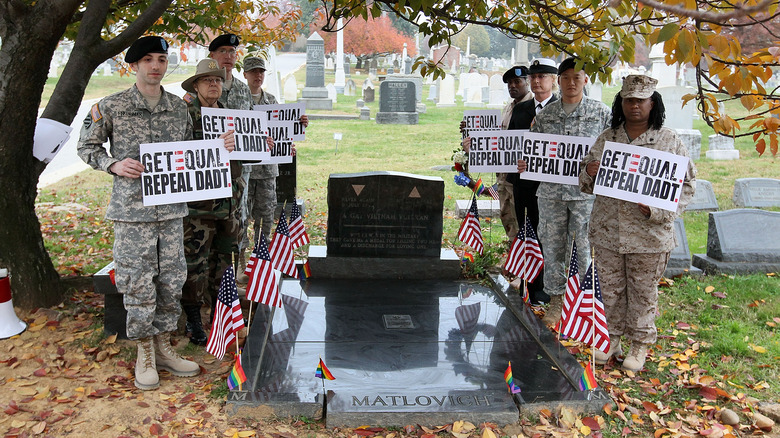The Truth About Where J. Edgar Hoover Is Buried
J. Edgar Hoover led the United States Federal Bureau of Investigation for an astonishing 48 years. Per the FBI, he started in 1924 when he was just 29 and continued until his death in 1972 at the age of 77. Among Hoover's many secretive and ultimately bigoted and harmful FBI programs was the "Sex Deviates" program. In 2015, the University Press of Kansas published Douglas M. Charles' book "Hoover's War on Gays: Exposing the FBI's 'Sex Deviates' Program," which details the lengths to which Hoover went to spy on, compile information about, and often ruin the lives of gay Americans.
Under the cover of the Hoover-led FBI's reputation for fair, by-the-book operations, the agency used their endless stores of money, access, and influence to target gay people and their organizations, invading their privacy and accusing them of things like suspicion of criminal activity, vulnerability to blackmail, and holding Communist views or sympathies. Hoover reportedly had an enormous "Sex Deviates" file that contained over 330,000 pages of information; the files were destroyed between 1977 and 1978.
Ironically, Hoover is believed by many to have been gay himself. The persistent rumor that he participated in "all-male cross-dressing sex parties" seems to have been proven false, per The Washington Post. However, Hoover had a long, close, and stable relationship with Clyde Tolson — his longtime associate director at the FBI for 40 years. The men often traveled together, went to work together, ate lunch together every day, and even occasionally wore matching suits.
Leonard Matlovich came out to fight against the army's gay ban
Neither man ever married, and when Hoover died — he was buried at Washington, D.C.'s Congressional Cemetery — he left most of his estate to Tolson. And when Tolson died in 1975, he was buried near Hoover in the same cemetery. Per The Washington Post, another famous grave in the Congressional Cemetery is about a ten-second walk from Hoover's. The grave (shown above) is that of Leonard Matlovich, a Vietnam War veteran who served in the Air Force for 12 years.
In the mid-1970s, Matlovich met fellow veteran and gay rights activist Franklin Kameny, who had been dismissed from the Army Map Service in 1957 for being gay. Kameny wanted to challenge the legality of the armed forces banning openly gay people from serving. Per Matlovich's friend Michael Bedwell, Kameny was looking for "someone with a flawless record who the military doesn't already know is gay, and who is ready to fight as a test case." Matlovich fit the bill and came out publicly in 1975, even appearing on the cover of Time magazine. Five years of unsuccessful legal battles ensued, and openly gay people continued to be banned from the United States military until 2011.
The origins of the Congressional Cemetery's Gay Corner
Per The Washington Post, Leonard Matlovich was inspired in 1984 by a visit to Père Lachaise Cemetery in Paris where Oscar Wilde's grave is a popular gay attraction. He also learned that Walt Whitman's lover Peter Doyle was buried in the Congressional Cemetery. Per Michael Bedwell, Matlovich bought two plots in the Congressional Cemetery near J. Edgar Hoover's grave "as a last laugh of sorts."
Matlovich died of AIDS-related illness in 1988, and his headstone famously reads, "When I was in the military they gave me a medal for killing two men and a discharge for loving one." The area of the cemetery in which he's buried is now known as "Gay Corner," and his grave has been the site of gatherings, protests, and even weddings. Sixty other gay men and women are interred there and 100 more have bought plots. It's used as the starting point for the annual Pride Run 5K and the cemetery hosts a Veterans Day commemoration of gay service members.


